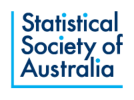Higher education legislation must be amended to avert cuts to STEM
In its submission to a Senate inquiry on the higher education legislation, Science & Technology Australia has proposed key amendments to avert damaging cuts in funding for STEM degrees.
In June, the Australian Government announced its Job-Ready Graduates plan. It proposes to make major changes to how university education is funded.
The Government has said it wants to see more graduates in science, technology, engineering and maths (STEM) courses – and wants more humanities students to acquire STEM literacy and skills – because these are areas where Australia expects strong future jobs growth.
STA strongly supports this goal - however, this legislation as drafted would cut the level of funding for universities to teach students in STEM courses by $690 million in 2021 alone.
STA President Associate Professor Jeremy Brownlie said it was important for people to understand the magnitude of the proposed cut to STEM degree funding in the legislation as currently drafted.
“While the Government’s stated goal is to boost STEM places, this proposed legislation would actually cut base funding by 17% for maths degrees, 16% for science and engineering degrees, and 29% for environmental sciences.”
“Our members in STEM faculties have analysed this very carefully and concluded the practical effect of the proposed cuts would actually limit the STEM places universities can afford to offer - which is the opposite of Education Minister Dan Tehan’s stated intention.”
“These cuts would also lower base funding into STEM faculties which has supported staff to teach but also to do some research and supervise training of our next generation researchers.”
“That’s especially important in crucial STEM fields such as mining, engineering, agricultural science and advanced manufacturing - vital fields to build greater sovereign capability for Australia.”
“As a result, we urge the Senate to ask the Government to avert the proposed cuts in the legislation to STEM as a condition of Senate support to pass the Bill.”
“If the Senate is unable to secure amendments by the Government or from a Senate majority to keep the current resourcing level for STEM, it would be better if the legislation did not proceed.”
As a constructive way to avert the proposed cuts to STEM, STA recommends the Senate add a “science loading” clause to the legislation to ensure funding for STEM education does not fall.
“Our proposed amendment would essentially ensure base funding for STEM degrees remains the same – meaning universities don’t reduce the number of places they can offer in STEM courses.”
“The proposed cuts to STEM are being proposed when universities are reeling from the colossal economic hit of the COVID-19 pandemic including the loss of international student income.”
STA members have also highlighted cautions, caveats and gaps in the assumptions on which the Deloitte report – which was used to design the package – sought to model the costs of teaching.
Australian Council of Deans of Science President Professor Brian Yates said: “The strong view of the Deans of Science is that the legislation under consideration is extremely damaging to STEM and should not be passed as is.”
“Given the funding incentives in the legislation and the proposed fall in STEM resourcing, universities are likely to enrol more students in the better funded disciplines and fewer in STEM.”
Australian Council of Engineering Deans President Professor John Wilson said: “We think the funding levels in the legislation could see smaller and regional universities struggle to fund the costs of teaching engineering courses.”
“It would also make it hard to deliver the ‘heavy engineering’ disciplines – which involve expensive large-scale facilities and infrastructure – such as mining engineering, petro-chemical engineering, electrical engineering, heavy mechanical engineering and advanced manufacturing.”
Australian Council of Environmental Deans and Directors President Professor Dianne Gleeson said: “The cuts to STEM education are largest of all in the environmental sciences - with a 29% funding cut proposed in this legislation.”
“That is likely to see a sharp drop in places in courses that equip students for careers in bushfire prevention, recovery and resilience; water management in our arid continent; helping farmers with soil improvement and weed eradication; and managing our unique State and National Parks.”
Professor Brownlie said: “We appreciate the complexity of this legislation. STEM degrees feature across the proposed new funding clusters in a way that makes it hard to adjust the references to cluster funding rates in the legislation cleanly and simply.”
“We have therefore proposed a way forward that would ultimately align with the Government’s objectives while protecting STEM faculties from cuts to current funding.”
“We also seek an amendment to the legislation to uncap places for Indigenous students from all parts of Australia, not just regional and remote communities. Extending that access would help the Government to meet its own Close the Gap targets in education and employment.”
STA’s full submission is available here. For interviews, please contact STA Communications Manager, Zoya Patel on 0406 249 786.
